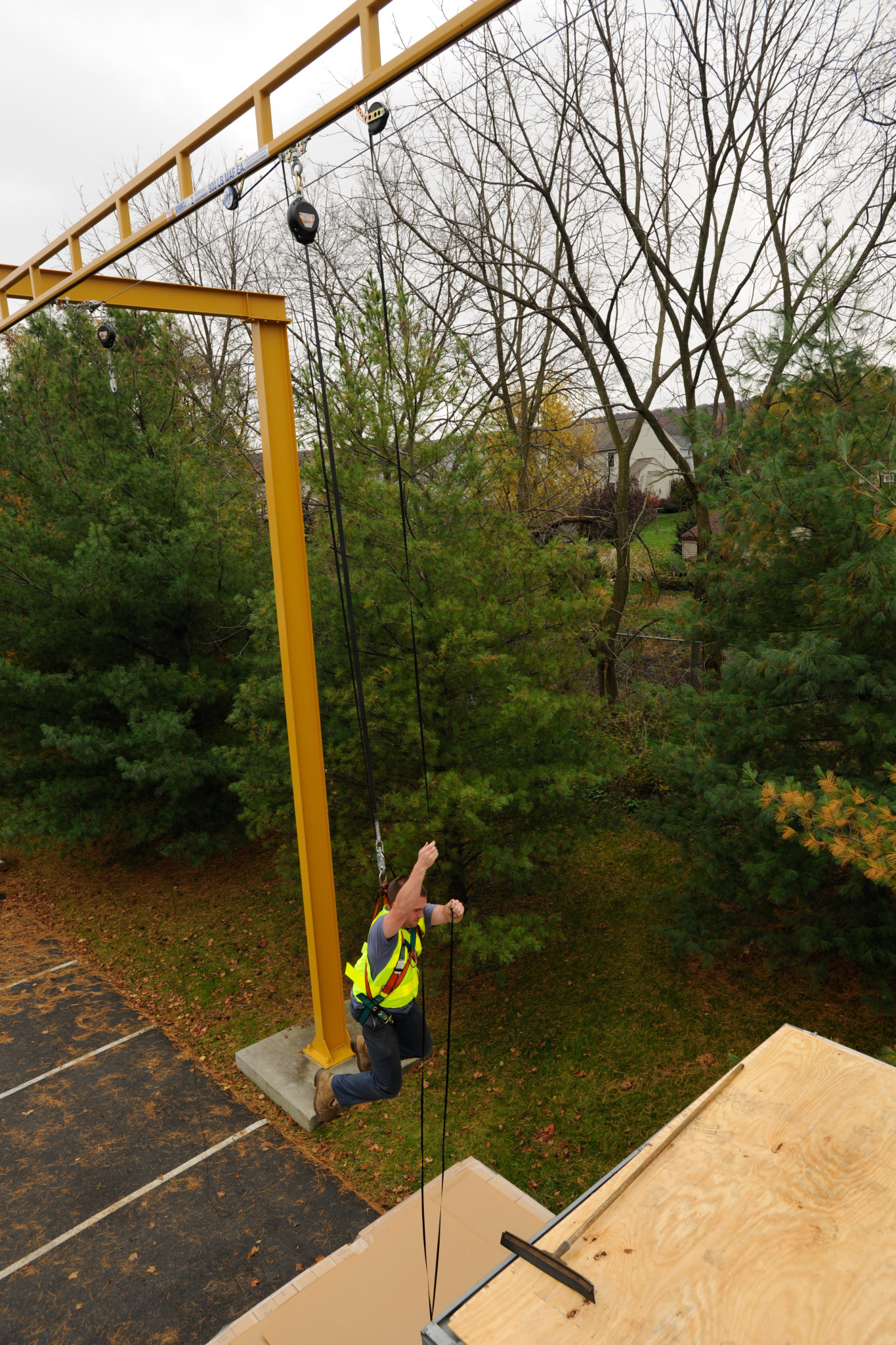
Suspension Trauma and Rescue for At-Height Workers
October 19, 2016
This blog was originally posted on 10/19/2016 and reviewed on 3/8/2021.
Disclaimer: The staff of Rigid Lifelines are not medical experts. If a worker is experiencing suspension trauma, seek medical assistance immediately.

Once a fall has been arrested, suspension syndrome and trauma become real concerns. So what exactly is suspension trauma and how is it dangerous? Simply speaking, suspension trauma is an injury sustained while immobilized in a vertical position with the legs relaxed. Suspension trauma is caused by orthostatic incompetence (also known as orthostatic intolerance). Orthostatic intolerance can occur in many different situations, including for workers who have to stand for prolonged periods of time. The legs become immobile with the worker standing in an upright position, allowing gravity to pull blood into the lower legs. While in a sedentary position, blood can accumulate in the veins—commonly referred to as venous pooling—and cause orthostatic intolerance.
After enough blood accumulates, return blood-flow to the heart is greatly reduced. The heart eventually has to speed up to maintain sufficient blood flow to the brain. But, if the blood supply is restricted enough, the heart is unable to speed up. The reduced heart rate actually causes workers to faint. In some cases, that solves the problem because the worker is able to slump to the ground where the legs, heart, and brain are on the same level. Once blood returns to the heart, the worker typically recovers quickly.
When wearing a harness, however, workers are suspended and can’t fall to the ground in a horizontal position, which causes the brain’s blood supply to drop critically. In suspension trauma, several conditions occur: the worker is suspended in an upright position with his or her legs dangling; the safety harness straps exert pressure on arteries in the inner leg, which greatly reduces blood-flow to the heart; and, the harness keeps the worker in an upright position, regardless of loss of consciousness, which is how workers often die from suspension trauma. That is why OSHA requires employers to have a written rescue plan in place at all times. And, when a fall occurs, the worker must be rescued as quickly as possible.
Suspension trauma warning signs include faintness, breathlessness, sweating, hot flashes, nausea, increased heart rate, low heart rate, loss of vision, and low blood pressure.
Rescue:
National standards mandate the use of a written rescue plan for workers at height. This helps ensure that every one on your team knows what to do in the event of a fall or suspension trauma. A suspended worker must be rescued quickly to minimize the dangers. In situations where self-rescue is unlikely, at-height workers should be supervised at all time.
Whether a worker can self-rescue or must rely on help, time is crucial. A worker can lose consciousness within a few minutes. If a worker is suspended long enough to lose consciousness, rescue personnel must be careful in treating him or her. Once a worker has been rescued, be sure to get them the professional medical help they need right away. Since orthostatic intolerance affects each worker differently, having a check-up to ensure the worker has not suffered delayed effects is also highly recommended.
More Information About Suspension Trauma Symptoms and Treatment
References:
Electronic Library of Construction Occupational Safety & Health Magazine
Categories
Share this post
Let us help you
Contact us today to find the perfect product fit for your job
